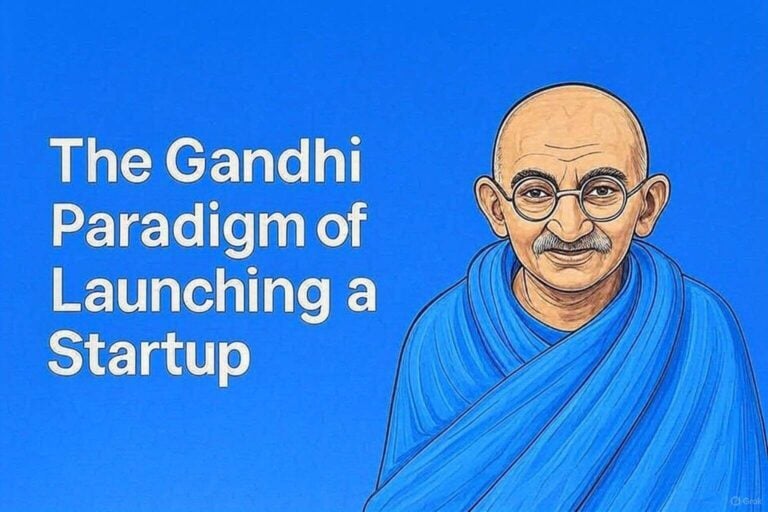How Culture Shapes Startup Success…
The data on how successful leaders spend their time reveals the practical importance of culture development. Studies of CEO behaviour show that effective leaders dedicate substantial portions of their schedule to activities that shape organisational culture: communicating with teams, participating in hiring decisions and reinforcing values through their actions and words. Tech leaders from top-performing companies spend 20 percent of their time working with external customers and channel partners, versus 12 percent for tech leaders from bottom quartile companies. This statistic illustrates how the best leaders model customer-focused behaviour, creating a culture that prioritises market connection throughout the organisation.

It’s What You Say and What You Do That Counts
The most effective tech leaders also understand that culture development cannot be limited to formal programs or initiatives. Instead, they weave cultural reinforcement into daily operations: the questions they ask in meetings, the metrics they emphasise, the stories they tell about company achievements and the behaviours they recognise and reward. This constant attention to culture pays dividends in organisational performance. Leaders who create environments where diverse perspectives can contribute effectively gain competitive advantages in innovation and market understanding.
A Case Study in Cultural Leadership: Satya Nadella at Microsoft
The transformation of Microsoft under Satya Nadella’s leadership provides a compelling example of how cultural change can revitalise even large, established tech businesses. When Nadella became CEO in 2014, Microsoft was struggling with a competitive, internally focused culture that hindered collaboration and innovation. Nadella systematically addressed cultural issues by modelling different behaviours and consistently communicating new values. He shifted the company from a “know-it-all” to a “learn-it-all” culture, emphasising growth mindset principles that encouraged experimentation and learning from failure. This cultural evolution enabled Microsoft to embrace cloud computing, develop new partnerships and regain market leadership in several categories.
Changing What Affects Culture
The Microsoft transformation demonstrates several key principles of cultural leadership in tech companies: the importance of leader behaviour in driving change, the need for consistent messaging over time and the business impact of cultural alignment with strategic objectives. Nadella’s approach is a testament to how effective leaders use culture as a strategic tool rather than treating it as a secondary consideration. His approach acknowledged that you cannot change culture by changing the things you observe; instead, but you can change the things that affect culture, and that is what he focused on.
The Cost of Ignoring Culture: Lessons from Uber’s Early Years
The contrast between Microsoft’s cultural transformation and Uber’s well-documented cultural challenges under Travis Kalanick illustrates the consequences of neglecting cultural leadership. Despite achieving rapid growth and market disruption, Uber’s early culture created significant problems that ultimately required leadership changes and extensive organisational restructuring. Under Kalanick’s leadership, Uber developed a culture characterised by aggressive competition, rule-bending and winning at all costs. While this approach contributed to rapid market expansion, it also created internal dysfunction, legal challenges and reputational damage that required years to address. The company’s cultural issues ultimately led to Kalanick’s resignation and a comprehensive cultural overhaul under new leadership.
Corrupted Culture Can Kill Business Success
The Uber experience demonstrates how cultural problems can undermine even successful business strategies. When organisational culture conflicts with sustainable business practices, it creates risks that eventually impact performance, talent retention and market position. For tech founders, this case study illustrates why cultural leadership cannot be treated as optional or secondary to other business priorities.
Building Culture Through Daily Leadership Actions
For tech founders serious about cultural leadership, the key lies in understanding that culture develops through consistent daily actions rather than grand gestures or formal programs. The most effective leaders focus on several practical areas where their behaviour directly shapes organisational culture:
1. Decision Making Transparency
How leaders make and communicate decisions signals what they value and how they expect others to operate. Tech leaders who explain their reasoning, acknowledge uncertainty and admit mistakes create cultures that value learning and honest communication.
2. Resource Allocation
The projects and initiatives that receive funding and attention demonstrate leader priorities more clearly than any mission statement. Leaders who consistently invest in long-term capabilities while managing short-term pressures model the balance they expect from their teams.
3. Recognition and Consequences
The behaviours that leaders celebrate or address directly influence what becomes acceptable within the organisation. Tech leaders who recognise collaborative problem-solving and learning from failure create environments that support innovation and risk-taking.
4. Communication Patterns
How leaders share information, ask questions and interact with different levels of the organisation establishes norms for communication throughout the company. Leaders who practice active listening and encourage diverse perspectives create more inclusive and creative cultures.
The Time Investment Required for Cultural Leadership
Successful leaders invest significant portions of their schedules in activities that directly shape organisational culture, recognising that this investment pays dividends in improved performance across all business functions. Effective cultural leadership requires both formal and informal interactions. Formal activities include team meetings, performance reviews and strategic planning sessions where leaders can explicitly discuss values and expectations. Informal interactions – conversations in hallways, participation in company events and visibility in day-to-day operations – often have a greater impact on cultural development because they feel more authentic and spontaneous.
The key for busy tech founders is recognising that time invested in cultural leadership is not separate from other business activities. Instead, cultural development happens through how leaders approach every interaction and decision. By being intentional about modelling desired behaviours and reinforcing cultural norms, leaders can positively shape organisational culture without requiring additional time allocations.
Good Leaders Put Culture at the Top
The journey from founder to leader requires new skills, different perspectives and sustained commitment to organisational development. However, for those who make this transition successfully, leadership provides the foundation for building technology companies that can thrive in any market conditions while creating lasting value for all stakeholders. The choice facing every tech founder is whether to remain focused primarily on technical and strategic challenges or to embrace the broader responsibilities of leadership that enable sustainable scaling. Research suggests that those who choose the path of comprehensive leadership development and place company culture as a top priority position themselves for long-term success.
You may want to read: “What is the Foundation of Good Startup Leadership.”







